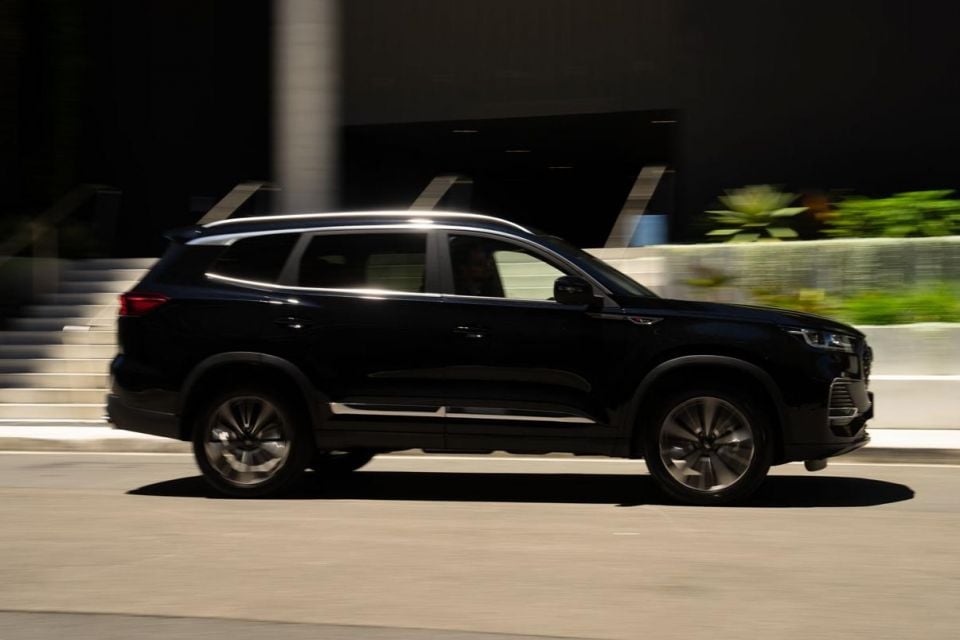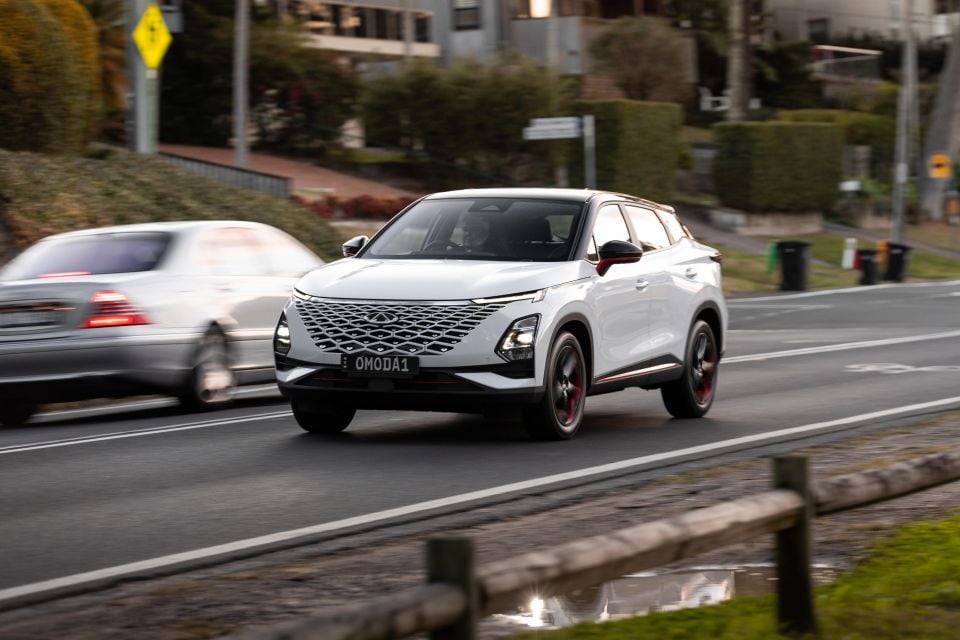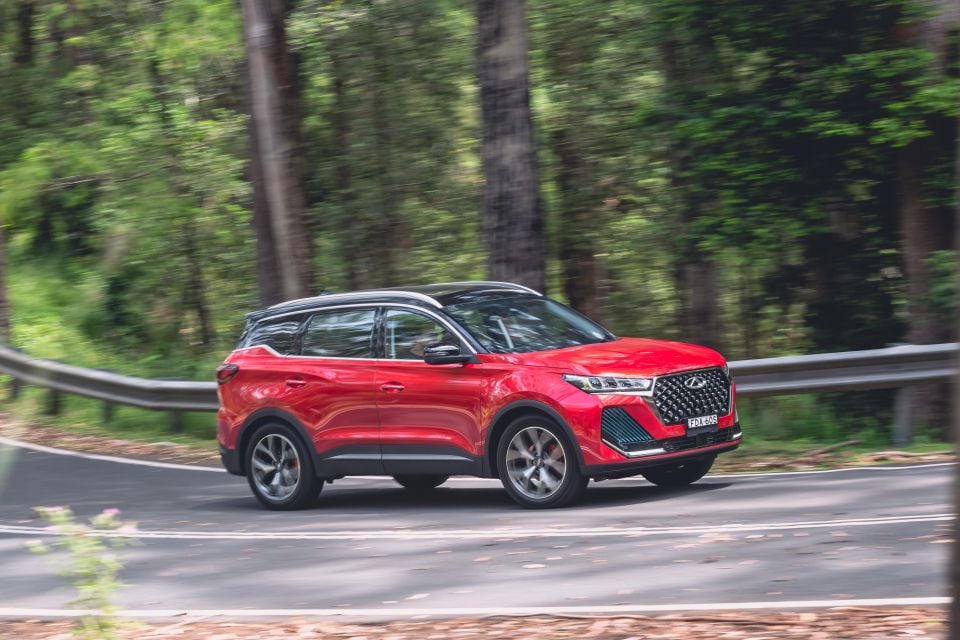

Damion Smy
Hyundai teases Staria EV ahead of likely January reveal
10 Minutes Ago

News Editor
Chery is not only putting its active safety and driver assist technology to the test in Australia, it’s planning to expand its local tuning program.
Next on the agenda: local tuning of components like the powertrain, suspension, and steering.
“We’re working pretty hard on that. I’ve just come back from a couple of weeks in China at our headquarters and the testing centre, and it’s sort of been the number one agenda item that we’ve been working through,” said Chery Australia managing director Lucas Harris.
“And so there’s some irons in the fire at the moment, but it’s probably a little too early to share which vehicles exactly they’ll be.

“But I’m pushing very hard because I know how important it is for our success in Australia, and I’ve definitely got the support from our colleagues and R&D, it’s just now trying to make all of the pieces fit together in the puzzle so that we can actually release something into the market with updated tuning.”
He said the brand got off to a rocky start with its Australian relaunch after widespread criticism of the calibration of its ADAS (advanced driver assistance system) technology, which includes lane-keep assist and driver attention monitoring.
“We haven’t had too many dramatic issues [since relaunching]. I think the obvious one, which has been a steep learning curve, is around the local adaptability,” said Mr Harris.
“Look, when we first launched the Omoda 5 in March last year, I’d be the first to admit that in that car there was extremely limited local testing and extremely limited local validation.
“So obviously we’re not very happy about that, and we’ve taken some fairly dramatic steps to resolve it.

“Everything that we will be bringing has now got a very rigorous local adaptability program,” he added, noting this includes the Omoda 5 GT, Tiggo 7 Pro and Tiggo 8 Pro Max.
Chery is working to adapt this for the existing 1.5-litre Omoda 5 models.
Mr Harris called early issues with the brand’s ADAS technology a “learning opportunity”.
“I’m pleased that happened very early on for us, and that’s given us an opportunity straight out of the gate,” he said.
“You know, would it have been nice for it not to have happened? Sure. But the world’s not perfect, and sometimes these learning opportunities present themselves.

“I’m really proud that Chery globally has really gotten behind us here in Australia and supported us through being able to quickly get on top of that and find a way forward so that we can overcome it pretty quickly.
“To give you a little bit of an idea in terms of the investment, I would say in the last maybe 10 months, we’ve had at least two engineers in Australia from China, basically every day. There would not be many days that there hasn’t been somebody here across the various models.
“So there’s a serious time investment in trying to get it right – and what we’re balancing is looking at how do we maintain the safety element of the vehicle and fulfil its core function, particularly for lane support systems, but also give users a good feeling, a good driving experience, because the systems are fairly pointless if every time somebody gets in they just turn them off.
“That’s not what we want. We actually want the car to be safer, so we’re trying to balance that safety element along with the user experience.”

Many changes to ADAS technology involve software, and Mr Harris said in most cases updates to software can be applied to existing Chery vehicles at dealerships.
Mr Harris said issues with the lack of local testing and validation with the Omoda 5 was compounded by the significantly different roads in Australia compared with China, where there are more uniform lane widths and markings.
“If you’ve been… on any real public road in Australia, the amount of variation in lane widths, lane markings, general condition, or some no lane markings at all, is extreme,” he said.
“And so I think it’s those differences and those different scenarios of roads, which are totally different from what’s in China.”

He noted the presence of this technology is a learning curve for many customers, who are often coming out of an older vehicle.
“What we find, I think emphasises this a little bit for us, is that most of the people that are buying our cars are coming out of older Kias and Holdens. They make up around a third of our customers, which is quite big – it’s evenly split between the two.
“And those older vehicles didn’t have that sort of technology, and so it’s a huge change in the way cars operate for a lot of people.
MORE: 2024 Chery Omoda 5 review MORE: 2024 Chery Tiggo 7 Pro Urban review
Where expert car reviews meet expert car buying – CarExpert gives you trusted advice, personalised service and real savings on your next new car.
William Stopford is an automotive journalist with a passion for mainstream cars, automotive history and overseas auto markets.


Damion Smy
10 Minutes Ago


Damion Smy
4 Hours Ago


Damion Smy
5 Hours Ago


Damion Smy
6 Hours Ago


Damion Smy
6 Hours Ago


Josh Nevett
6 Hours Ago